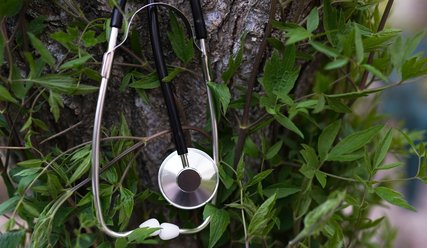Telehealth around the motu | Dunedin
The College has updated its 2017 telehealth position statement, Specialist GP telehealth consultations.
The revised statement reflects the College’s view on how telehealth could be used to supplement in-person consultations, while acknowledging that decisions about how telehealth consultations can be integrated into a practice need to be made by the specialist GPs and their teams who understand the local context and what will work best for patients and their health outcomes.
We asked some members to share their experiences about how they use telehealth in their practices, as well as the benefits and the challenges that telehealth has created for them, their patients, and their communities. First up, Dr Peter Gent shares his experiences.
Dr Peter Gent
Peter is a Dunedin-based GP who works in a largely urban practice with around 16,000 enrolled patients with a wide range of backgrounds and demographics. The enrolled population has varied engagement with local healthcare services, as well as varying degrees of health and IT literacy. There is a hospital close to the practice.
Prior to the call in 2020 to switch to telehealth just days prior to New Zealand going into its first Level 4 COVID-19 lockdown, Peter’s practice was already providing phone consultations and used a patient portal as alternative ways to connect with patients.
During the 2020 lockdown, the practice had a much greater reliance on phone consultations and noticed an increase in patient portal email traffic.
“Alongside this, we started video consultations with patients using Doxy.me as well as Open Notes. Probably like all other practices we also moved to a telephone triage system for all consultations to determine what sort of consultation would be best for the patient and the GP.
“We have continued to offer patients the above types of consultations to complement in-person consultations. We still do telephone triage for patients with problems requiring action the same day and all patients with respiratory symptoms.”
Peter says that while there were no significant IT or hardware changes and investments required, it was the cultural change that was significant within the practice as the team, and the patients, adapted to the change in dynamic to the usual GP-patient face-to-face consultation.”
As for a change in workloads, Peter says, “Inevitably there is some difficulty when adjusting to new ways of working. We did find an element of double handling for some patients if it was found that a telehealth consultation wasn’t sufficient, and they required a face-to-face consultation.”
“When I think about the benefits and challenges of telehealth, I would say the benefits are the access and convenience for patients, while the challenges would be having to adapt to a new way of working (during what was an incredibly busy time), losing the human contact, something that affects the clinicians and patients alike, potentially missing non-verbal cues that would have otherwise been identified in a face-to-face consultation and the added time adapting notes and comments on results so they can be understood by the patients.”
When asked if telehealth has a place in the future of general practice, Peter says emphatically, “Yes. It does have a place, but I would hate to see it replace our face-to-face consultations.”
Related

11 September 2025 | College and members
GPs want patients to be seen, heard and known

21 May 2025 | College and members
Budget 2025 opinion: We don't need to create a new health service, we need to invest in the current one

26 March 2025 | College and members